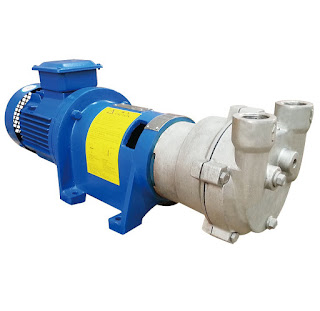What on earth is the vacuum furnace for heat treatment
Vacuum heat treatment is a comprehensive technology combining vacuum technology with heat treatment. It refers to all and part of heat treatment process carried out in vacuum. The vacuum furnace of heat treatment equipment has high thermal efficiency, can achieve rapid heating and cooling, can achieve no oxidation, decarbonization, carburization, can remove the phosphorus chips on the surface of the workpiece, and has the function of degreasing and degassing, so as to achieve the effect of bright surface purification.
Vacuum heat treatment is a comprehensive technology combining vacuum technology with heat treatment. It refers to all and part of heat treatment process carried out in vacuum. China divides vacuum into low, medium, high and ultra-high vacuum. At present, the working vacuum of most vacuum heat treatment furnaces ranges from 1.33 to 1.33 x 10 -sup3; Pa.
Vacuum Furnace for Heat Treatment Equipment
Good working environment, safe operation, no pollution and pollution. The treated workpiece has no danger of hydrogen embrittlement. It can prevent surface hydrogen embrittlement of titanium and refractory metal shell. The vacuum heat treatment process has good stability and repeatability. With these advantages, the development of vacuum heat treatment equipment and technology has been paid more and more attention and applied more and more widely.
Strict vacuum sealing: It is well known that vacuum heat treatment of metal parts is carried out in a closed vacuum furnace. Therefore, it is very important to obtain and maintain the original leakage rate of the furnace and ensure the working vacuum of the vacuum furnace to ensure the quality of vacuum heat treatment of parts. So a key problem of vacuum heat treatment furnace is to have reliable vacuum sealing structure. In order to ensure the vacuum performance of the vacuum furnace, a basic principle must be followed in the structural design of the vacuum heat treatment furnace, that is, the furnace body should be welded in air tightness, at the same time, the furnace body should be opened or opened as little as possible, and the dynamic sealing structure should be adopted or avoided to minimize the chance of vacuum leakage. Components and accessories installed on the vacuum furnace body, such as water-cooled electrodes and thermocouple export devices, must also design sealing structures.
Oxygen, water vapor, carbon dioxide and other oxidizing gases exist in the air when metal materials are heated in air furnaces. Oxygen films or oxide scales are easily formed on the heated metal surface due to the oxidation of these gases with the metal, and the original metallic luster is completely lost. These gases also react with carbon in metals to decarbonize their surfaces. If the furnace contains carbon monoxide or methane gas, it will also increase the carbon on the metal surface. For Ti, Zr and insoluble metals W, Mo, Nb and Ta with very active chemical properties, heating in an air furnace not only generates oxides, hydrides and nitrides, but also absorbs these gases and diffuses them into the metal, which seriously deteriorates the properties of metal materials. These disadvantages, such as oxidation, decarbonization, carburization, gas absorption and even corrosion, are sometimes unavoidable when heated in controlled atmosphere or salt bath furnaces. In order to solve this problem, the usual way is to leave processing allowance before heat treatment and remove oxidation and decarbonization layer after heat treatment.
Age Hardening Mold Steel For Plastic Die Steel
Precious Metal Purification Furnace
Heat Treatment Furnaces Classification
Vacuum Hot Press Furnace For Sintering Advanced Ceramics




评论
发表评论